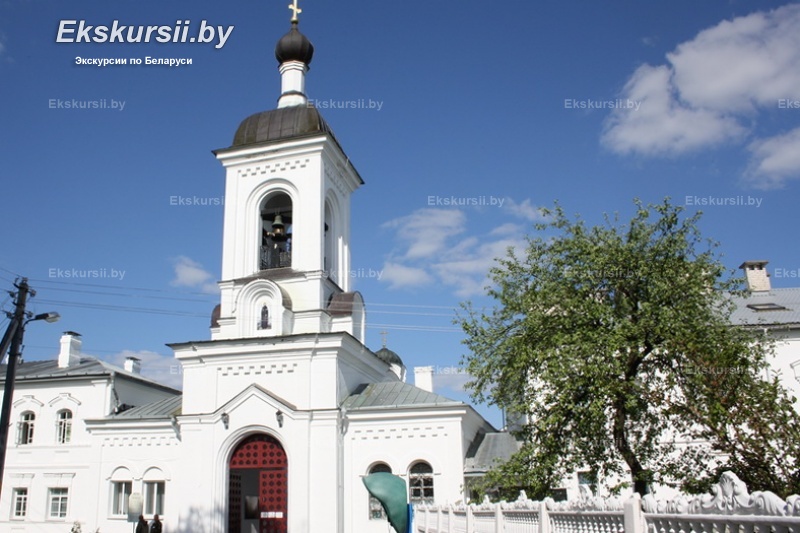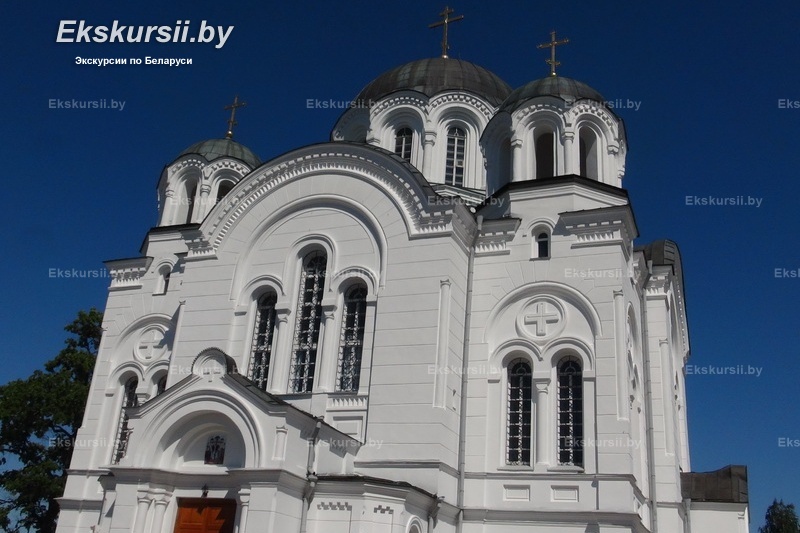- Home
- →
- Attractions
- →
- The Savior and St Euphrosyne Convent in Polotsk
The Savior and St Euphrosyne Convent in Polotsk
The Spaso-Euphrosyne Monastery in Polotsk is one of the most significant and unique churches in Belarus, serving as a center of Orthodox spirituality and culture. Founded in the 12th century by Saint Euphrosyne of Polotsk, the monastery became a symbol of religious enlightenment and book culture on Belarusian lands. Today, it is one of the top landmarks in Polotsk, attracting pilgrims and tourists from all over the world.
History
The Spaso-Euphrosyne Monastery was founded in 1125 by Princess Predslava, granddaughter of Vseslav the Sorcerer, who took the monastic name Euphrosyne. With deep spiritual commitment and education, she dedicated her life to serving God, enlightening others, and helping people. It was at her initiative that a women’s monastery was established near Polotsk — becoming a major center of Orthodox faith and culture in Belarus.
In 1161, by order of Euphrosyne, the Transfiguration Church was built — one of the oldest surviving churches in Belarus. That same year, the master Lazar Bohsha created the famous Cross of Euphrosyne of Polotsk, a unique masterpiece of jewelry art and a spiritual symbol of the nation.
After Euphrosyne’s death in 1173, she was canonized, and her relics became a revered shrine. In 1910, they were transferred from the Kyiv-Pechersk Lavra to Polotsk. During World War I, the relics were evacuated, and in 1943, during the German occupation, they were solemnly returned to the monastery.
After the monastery was closed in 1961, monastic life ceased, but since 1990, it has been revived. Today, the monastery is active once again and plays an important role in the country’s spiritual life. Visiting this monastery is an essential part of any tour to Polotsk and a popular destination for travel across Belarus.
Architecture
The monastery’s architectural ensemble reflects its centuries-old history. Its central element is the Transfiguration Church, built in 1161 by the architect Ioann. This cross-in-square church was constructed using flat baked bricks (plinths) in the tradition of Byzantine architecture. It is distinguished by restrained, monumental forms and decorative masonry that creates ornamental patterns. Inside, fragments of 12th-century frescoes are preserved, along with the tomb of Saint Euphrosyne.
The ensemble also includes:
- The 19th-century Church of the Exaltation of the Cross — designed in pseudo-Byzantine style;
- A refectory church and monastic cells from the 18th–19th centuries in Baroque and Classicist styles;
- A bell tower completing the vertical composition of the complex.
Cultural and religious significance
The Spaso-Euphrosyne Monastery is a major Orthodox center in Belarus. It houses the relics of Saint Euphrosyne of Polotsk, who is venerated as the patroness of Belarus. The monastery is also known for its educational work: regular services, spiritual gatherings, and outreach programs take place here.
Excursions to the Spaso-Euphrosyne Monastery in Polotsk
The Spaso-Euphrosyne Monastery is included in various guided tours of Polotsk, offering insights into the rich history and architecture of the ancient city. Visiting the monastery is a key part of any tour to Polotsk and provides an opportunity to experience the spiritual heritage of Belarus.
On our portal, you can book an individual or corporate tour to the Spaso-Euphrosyne Monastery to immerse yourself in the atmosphere of this holy place and learn more about its historical and cultural significance.
Individual and corporate excursions - The Savior and St Euphrosyne Convent in Polotsk
-
-
Vitebsk - Polotsk (2 days)
- Dates on request
- Duration: 2 day
- excursions according to the program
- meeting/seeing off at the train station
- certified guide services
- transport services
-
Vitebsk - Zdravnevo - Polotsk - Minsk - Dudutki (3 days)
- Dates on request
- Duration: 3 day
- excursions according to the program
- meeting/seeing off at the train station
- certified guide services
- transport services
-
Mogilev - Bujnichi - Vitebsk - Polotsk (3 days)
- Dates on request
- Duration: 3 day
- excursions according to the program
- certified guide services
- transport services
-
Minsk - Dudutki - Polotsk - Vitebsk - Zdravnevo (3 days)
- Dates on request
- Duration: 3 day
- excursions according to the program
- meeting/seeing off at the train station
- certified guide services
- transport services
-
Polotsk - Vitebsk - Zdravnevo (2 days)
- Dates on request
- Duration: 2 day
- excursions according to the program
- certified guide services
- transport services



